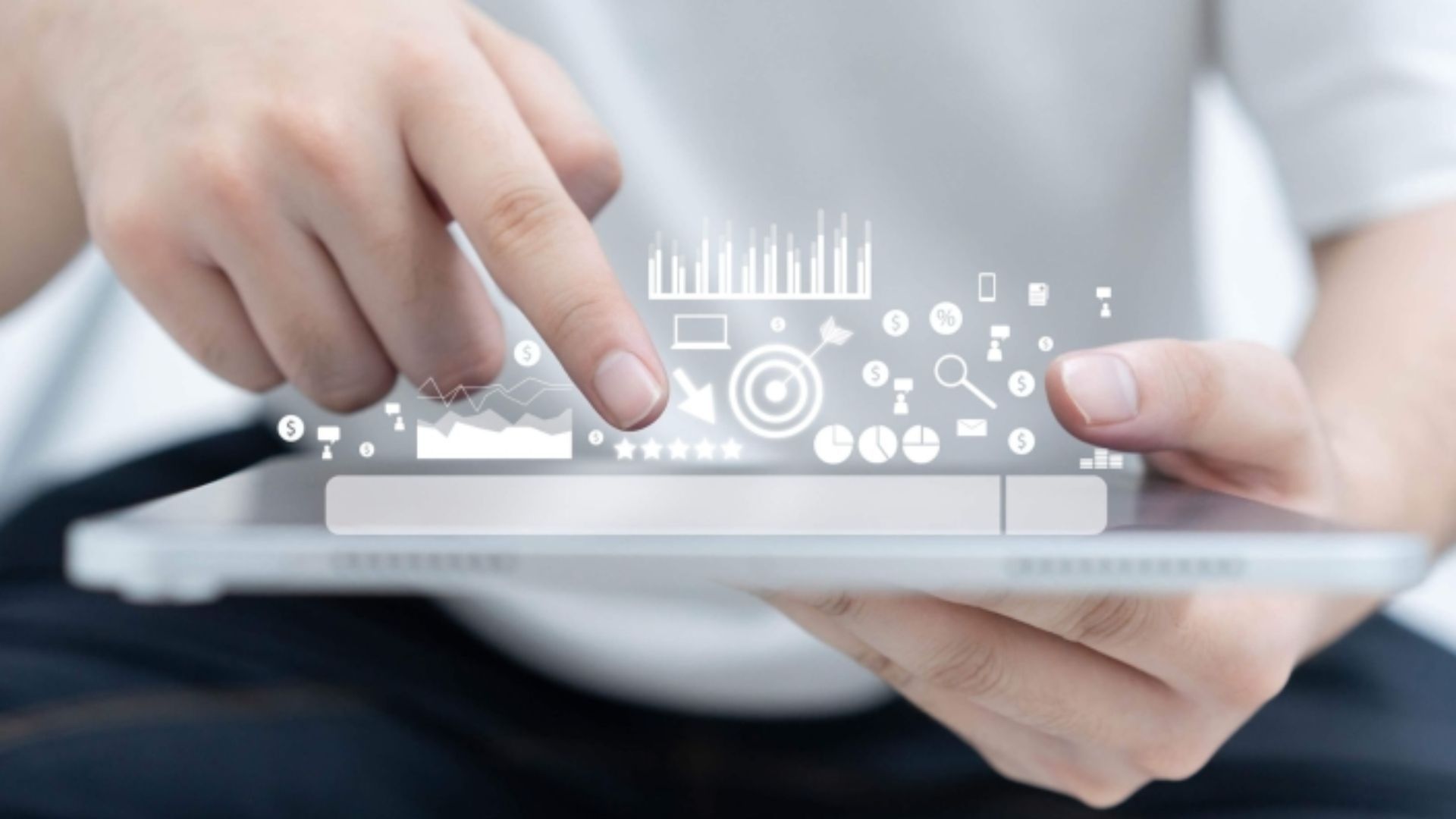Digital twins are virtual replicas of physical products, processes, or systems that enable real-time monitoring, analysis, and optimization. They use data from sensors, simulations, and other sources to create a digital model that reflects the behavior and performance of the physical object.
Digital twins offer a powerful way to improve product development processes by creating virtual replicas of physical products, processes, or systems. They provide a range of benefits, including an improved understanding of product behavior and performance, enhanced predictive capabilities, better decision-making, optimization of design and production, reduced costs and risks, and increased agility.
In this guide by 3D rendering company CGIFurniture, we will explore the benefits, applications, key considerations, examples, best practices, and future trends of digital twins in product development.
What is a Digital Twins Concept?

Digital Twins are a virtual representation of a physical product or system, created using computer-aided design (CAD) software. They are becoming increasingly popular in product development as they offer numerous benefits.
CGI (Computer Generated Imagery) is essential components of creating Digital Twins. 3D rendering is used to create realistic images and animations of the product, while 3D modeling is used to create the virtual representation of the product itself. In many cases, companies also rely on professional 3d animation video services to showcase product functionality, simulate real-world performance, and create engaging visual materials for presentations and marketing.
Product 3D technology lets manufacturers and designers test new designs and functionality before building the real thing. It can also help companies improve efficiency by identifying bottlenecks in manufacturing processes, as well as improving customer experience with better packaging design.
Benefits of Digital Twins in Product Development

Digital twins are useful in product development because they provide a virtual representation of your product or service. They allow you to simulate how the real world would respond to certain changes, so you can test them before actually implementing them. This permits companies to optimize their products and processes by testing multiple scenarios without any negative impact on the environment or end users.
As a popular product marketing strategy, digital twins can provide a range of benefits, including:
- Improved understanding of product behavior and performance.
- Enhanced predictive capabilities to anticipate and prevent issues.
- Better decision-making based on real-time data and insights.
- Optimization of product design, production, and maintenance.
- Reduced costs and risks associated with physical testing and prototyping.
- Increased agility and responsiveness to changing market and customer needs.
- Improved real-time monitoring and control of products and processes.
- Enhanced predictive capabilities to anticipate and prevent issues.
- A better understanding of physical issues and their impact on product performance.
- Creation of digital footprints that can be used for analysis and optimization.
- Compliance with regulatory environments and standards.
- Exploration of alternative technologies and approaches.
In short, the benefits of 3D technology and digital twins in product development, production, and quality assurance are clear. The digital twin concept is not a panacea but it provides a pathway to innovation and growth for companies that want to use technology to improve their business processes.
Applications of Digital Twins in E-Commerce Businesses

Digital Twins have a wide range of applications in product development. Here are some of the key areas where they can be used:
- Market requirements and customer demands: Digital twins can help companies to better understand customer needs and preferences, and to develop products that meet those requirements. By simulating different scenarios and testing various designs virtually, companies can create products that are more likely to be successful in the market.
- Development speed and product success rates: They can help to speed up the product development process by allowing designers and engineers to test and iterate designs more quickly. This can lead to higher success rates for products, as issues can be identified and addressed early on in the development process.
- Complexity and business risk: Digital twins can help companies to manage complexity and reduce business risk by providing a virtual representation of the product. This allows companies to test and optimize designs before production, reducing the likelihood of costly errors or failures.
- Sustainable supply chains and circular economy initiatives: Products digital replicas can be used to optimize supply chain operations and reduce waste in production. By simulating different scenarios and testing various designs virtually, companies can identify opportunities to reduce waste and improve sustainability.
- Heterogeneous product data and its integration with ERP and PLM systems: Digital twins can help to integrate heterogeneous product data from different sources, such as enterprise resource planning (ERP) and product life cycle management (PLM) systems. This can provide a more complete picture of the product and its development, allowing for better decision-making and optimization.
Digital twins can help companies better understand customer needs, speed up the development process, reduce business risk by applying data analytics to supply chains and product lines—even pulling in data from different sources. Overall, it can be a valuable tool for companies looking to improve their product development process and increase their chances of success in the market.
Key Considerations for Implementing Digital Twins

Implementing digital twins in product development can be a complex process that requires careful consideration. Here are some key considerations to keep in mind:
- Data management: Digital twins require a large amount of data to be effective. Companies need to have a clear plan for managing this data, including how it will be collected, stored, and analyzed.
- Technology infrastructure: Implementing them requires a robust technology infrastructure, including hardware, software, and networking capabilities. Companies need to ensure that their infrastructure is capable of supporting the demands of digital twins.
- Expertise and skills: Developing and executing digital twins requires specialized skills and expertise, including knowledge of CAD software, simulation tools, and data analytics. Companies need to ensure that they have the necessary expertise in-house or can access it through partnerships or outsourcing.
- Integration with existing systems: Digital twins need to be integrated with existing systems, such as ERP and PLM systems, to be effective. Companies need to ensure that they have a clear plan for integrating digital twins with these systems.
- Cost and ROI: Enforcing twins can be expensive, and companies need to carefully consider the costs and potential return on investment (ROI) before proceeding. This includes considering factors such as reduced product development time, improved product quality, and increased market success rates.
By carefully considering these factors, companies can ensure a successful implementation of digital twins that can improve their product development process and increase their chances of success in the market.
Usages of Digital Twins for Product Development in Different Industries

Digital twins can be used in many ways, including the following examples:
- Consumer Electronics: A company in the consumer electronics sector is using digital twins to boost quality and supply chain resilience. It stores detailed information on the content of its products, including the exact materials used, and uses this information to optimize production processes and reduce waste.
- Automotive: Digital twins are used in 3D car design and product development, enabling global collaboration and avoiding delays common with traditional 3D automotive rendering software. They are also used to create interactive 2D and 3D user experiences for in-vehicle infotainment (IVI) systems and digital clusters.
- Industrial Manufacturing: An industrial manufacturer is using digital twins to improve product quality and reduce costs. The company has developed a full-life-cycle twin that tracks the product from idea development to use, allowing for early identification of quality issues and reducing the likelihood of costly failures in the field.
- Aerospace: Digital twins are used in the aerospace industry to simulate and optimize the performance of aircraft components and systems. They are also used to reduce the time and cost of testing and certification processes.
- Energy and Utilities: Digital twins are used in the energy and utilities sector to optimize the performance of power plants and other infrastructure. They can be used to simulate different operating scenarios and identify opportunities for optimization and cost reduction.
These use cases highlight the versatility of digital twins and their potential to transform product development processes across a range of industries.
Best Practices for Using Digital Twins in Product Development

Digital twins can help companies make better decisions about how to design and build products. They can also improve communication between teams, reduce development costs and accelerate time to market for new products.
Here are some best practices for using digital twins in product development:
- Start with a clear use case: Before executing digital twins, companies should start with a clear use case that aligns with their business objectives.
- Collect and manage data effectively: Twins require a large amount of data to be effective, and companies need to have a clear plan for collecting, storing, and managing this data. This includes ensuring that the data is accurate, up-to-date, and accessible to the right people.
- Ensure cross-functional collaboration: Digital twins require collaboration across different functions, including design, engineering, and manufacturing. Companies should ensure that there is effective communication and collaboration across these functions to ensure that the Digital Twin is effective.
- Use simulation tools effectively: Digital twins rely on simulation tools to create virtual representations of products. Companies should ensure that they are using these tools effectively to simulate and optimize designs.
- Continuously iterate and improve: Digital twins are most effective when they are continuously iterated and improved. Companies should have a clear plan for how they will continuously improve and refine them over time.
Regarding future trends and developments in digital twin technology for product development, here are some potential areas to watch:
- Increased use of AI and machine learning: AI and machine learning can be used to optimize twins and improve their accuracy and effectiveness.
- Integration with IoT and other technologies: Digital twins can be integrated with other technologies, such as the Internet of Things (IoT), to provide more complete and accurate representations of products.
- Expansion into new industries and sectors: They are currently being used in a range of industries, but there is potential for them to be used in new industries and sectors, such as healthcare and education.
- Increased focus on sustainability: Twins can be used to optimize products for sustainability, and there is potential for them to be used more widely in this area in the future.
Overall, digital twins are a rapidly evolving technology with a range of potential applications in product development. Companies that adopt best practices and stay abreast of future trends and developments will be well-positioned to take advantage of the benefits that the concept can offer.
As we mentioned above, product CGI is an essential component of creating digital twins. It involves creating a virtual representation of a physical object using computer software.
Photorealistic 3D modeling, rendering, and animation provide numerous benefits for product manufacturers and marketers. If you are interested in exploring digital twins for product development with 3D modeling services , you can outsource it to CGIFurniture. Book a free demo consultation to get more information on how we can assist you!
